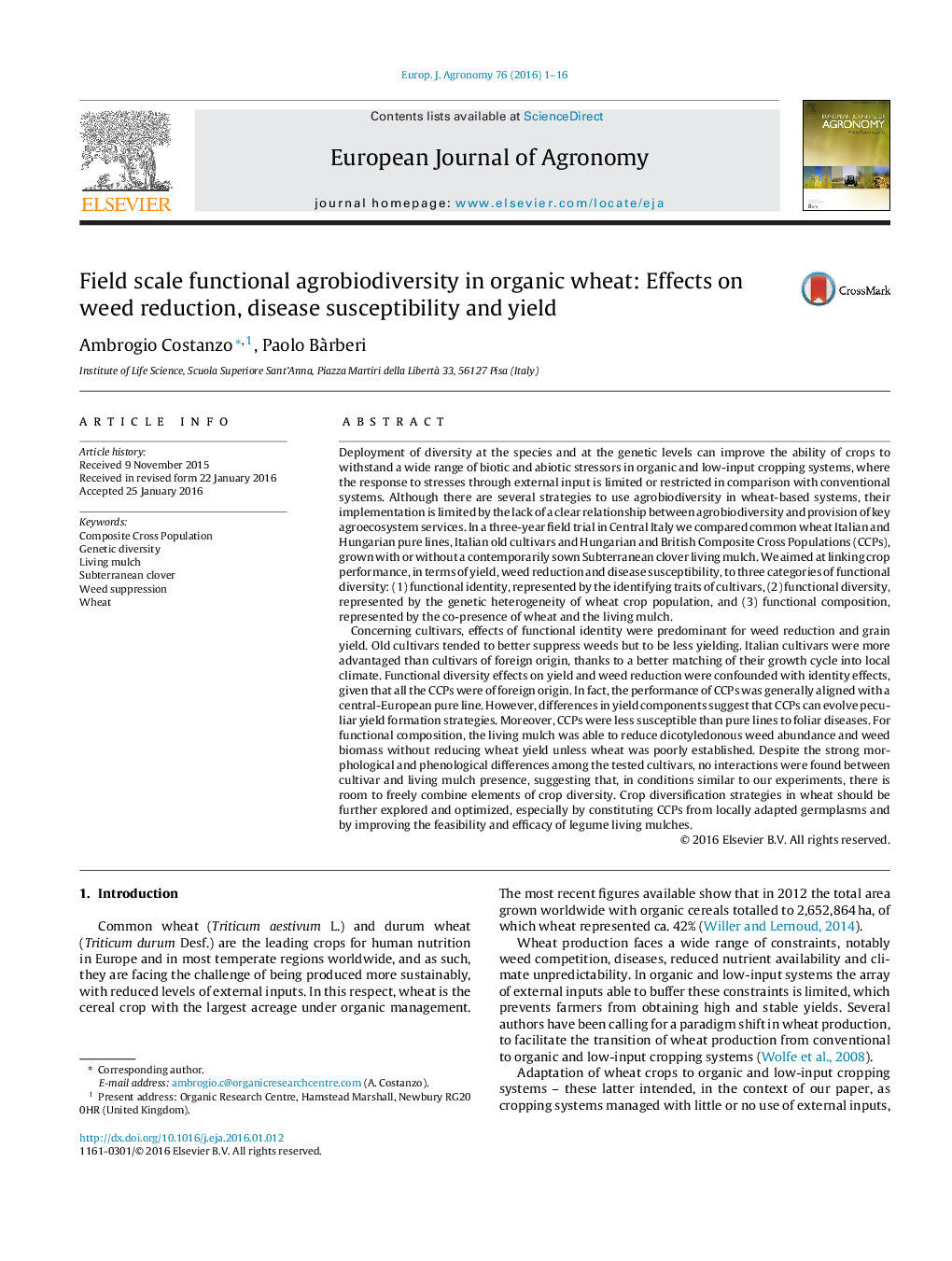| Article ID | Journal | Published Year | Pages | File Type |
|---|---|---|---|---|
| 6374246 | European Journal of Agronomy | 2016 | 16 Pages |
Abstract
Concerning cultivars, effects of functional identity were predominant for weed reduction and grain yield. Old cultivars tended to better suppress weeds but to be less yielding. Italian cultivars were more advantaged than cultivars of foreign origin, thanks to a better matching of their growth cycle into local climate. Functional diversity effects on yield and weed reduction were confounded with identity effects, given that all the CCPs were of foreign origin. In fact, the performance of CCPs was generally aligned with a central-European pure line. However, differences in yield components suggest that CCPs can evolve peculiar yield formation strategies. Moreover, CCPs were less susceptible than pure lines to foliar diseases. For functional composition, the living mulch was able to reduce dicotyledonous weed abundance and weed biomass without reducing wheat yield unless wheat was poorly established. Despite the strong morphological and phenological differences among the tested cultivars, no interactions were found between cultivar and living mulch presence, suggesting that, in conditions similar to our experiments, there is room to freely combine elements of crop diversity. Crop diversification strategies in wheat should be further explored and optimized, especially by constituting CCPs from locally adapted germplasms and by improving the feasibility and efficacy of legume living mulches.
Related Topics
Life Sciences
Agricultural and Biological Sciences
Agronomy and Crop Science
Authors
Ambrogio Costanzo, Paolo BÃ rberi,
